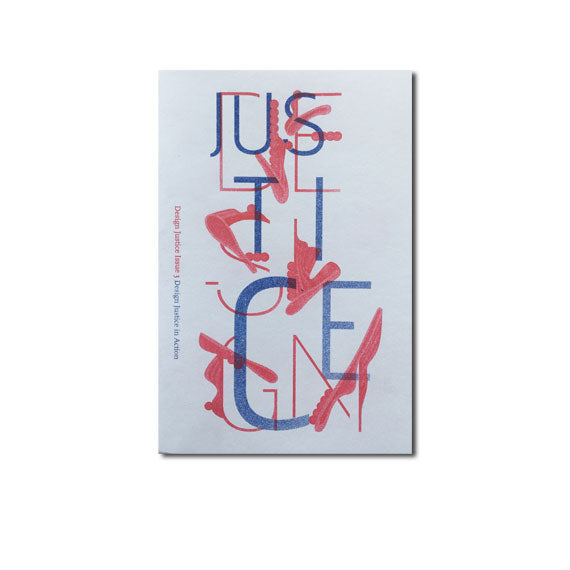Table Of Content

Most cisgender people are unaware of the fact that the millimeter wave scanners operate according to a binary and cisnormative gender construct; most trans people know, because it directly affects our lives. Design justice is defined by experts in interdisciplinary fields as a theory and practice of designing with action to mitigate risks and harms toward the marginalized, and oppressed. Those of us who work in digital learning or IT organizations need to recognize (1) how educational technologies perpetuate and exacerbate inequity and (2) the need for justice-oriented work in this area. While digital learning can be a site of liberatory pedagogical practices, the tools and approaches we use are often antithetical to our goals. This is particularly true of learning technologies that are fueled by students' data (i.e., in which students' data are extracted and used/sold for profit). Thinking about how to reject these exploitative tools, pervasive in our educational institutions, is challenging.
International Tribunal Set To Issue Climate Change Opinion On May 21
Ostrowski, Das, and Saadi hope that the workshop this past August will inspire the broader engineering design community to consider and adopt design justice principles. “Design justice” seeks to rethink design processes, focusing on people who are often marginalized by it, and using collaborative and creative practices to approach the deeper challenges our communities face. COSIS was formed by a multilateral treaty in anticipation to the 2021 United Nations Climate Change Conference, commonly referred to as COP26, held in Glasglow, Scotland. Recidiviz is a non-profit engineering team driving towards a smaller, fairer criminal justice system. They use modern data infrastructure and thoughtful product design to empower criminal justice agencies, policy makers, and advocates to safely and sustainably improve outcomes for communities.
Related Books
The written opinion will be posed on the ITLOS website following the hearing. Following the request, the Tribunal allowed parties of the Convention and Intergovernmental organizations to submit written statements. 30 countries, the European Union, and eight international organizations submitted statements. Since first meeting in 1996, the Tribunal has issued opinions in 29 cases and given two advisory opinions. The cases generally relate to maritime boundaries and actions taken against vessels.
Lower Division Courses
When she introduces the term, in her book Black Feminist Thought, Collins emphasizes race, class, and gender as the three systems that historically have been most important in structuring most Black women’s lives. She notes that additional systems of oppression structure the matrix of domination for other kinds of people. The term, for her, describes a mode of analysis that includes any and all systems of oppression that mutually constitute each other and shape people’s lives. Justice-oriented designs often require big moves, ones that may call for collective action. At Middlebury, we've been inspired by, for example, Mapping Access, a participatory data-collection and accessibility mapping project of the Critical Design Lab.
Florida Rights Restoration Coalition
We use design to sustain, heal, and empower our communities, as well as to seek liberation from exploitative and oppressive systems. The Design Justice Project at MIT includes professor of media arts and sciences and MIT Dean for Digital Learning Cynthia Breazeal; assistant professor of urban science and planning Catherine D’Ignazio, and professor of mechanical engineering Maria Yang. Some of the project’s research has been funded through the d’Arbeloff Fund for Excellence in Education. The term emerged about 7 years ago when debates and dialogues about inclusion and diversity in spaces started to get stronger, creating movements that fought for the rights of people who had their roots and choices denied in society.
MIT Press Direct
They design innovative coursework for our online criminal justice degree to establish a strong connection with you and your peers. This engagement fosters a great learning experience and maximizes learning outcomes. You can also graduate with experience in the field if you choose an internship as your senior capstone experience. Our fund supports design justice initiatives within the College of Design including; design justice courses, scholarships, and events.

It can be difficult to convince colleagues in an engineering department that these are essential aspects of design. “But if you’re an engineer, the things that you’re working on — or you’re a designer, the things that you’re working on — it all has to do with people, at some stage of the process, and you cannot remove them from the equation and then be surprised when things don’t go well,” Das says. The August event was a follow-up to a Design Justice Pedagogy Summit organized by Media Lab design researcher and postdoc Anastasia Ostrowski and mechanical engineering PhD students Madhurima Das and Jana Saadi in 2022. With intellectual dexterity accented by personal proximity to social movements and discrimination, Sasha Costanza-Chock calls us to see through the mythologies of the current high priests of design that perpetuate oppression. Both visionary and practical, Design Justice is required reading for those ready to move beyond hype and doom discussions and towards creating liberating processes so urgently needed.
What Crenshaw calls ‘single-axis analysis,’ where race or gender are considered as independent constructs, has wide-reaching consequences for A.I. These examples show how asking "What's wrong?" can lead to designs that focus on justice for marginalized and disenfranchised teachers and students. Outside of formal curriculum, participatory design may seem straightforward, but inside the formal curriculum there are fewer opportunities for participatory design to take shape. For example, faculty typically design part or most of a class before they meet their students.
Promote Alternatives to Prison and JailLet's invest in more effective ways of holding people accountable and meeting the needs of crime survivors. We view change as emergent from an accountable, accessible, and collaborative process, rather than as a point at the end of a process. We prioritize design’s impact on the community over the intentions of the designer. “The Design Justice Pedagogy Summit is a great example of how a community can gather to support one another in curriculum innovation,” says Breazeal.
For example, the Appropriate Technology movement advocated for local, sustainable approaches to technological development in the countries of the Global South, rather than wholesale adoption of technology developed to serve the needs and interests of those in the wealthiest countries. In the 1980s, Computer Professionals for Social Responsibility emerged during the cold war to advocate that computer scientists resist the incorporation of their work into the nuclear arms race. Closely linked to intersectionality, but less widely used today, the matrix of domination is a term developed by Black feminist scholar Patricia Hill Collins to refer to race, class, and gender as interlocking systems of oppression. It is a conceptual model that helps us think about how power, oppression, resistance, privilege, penalties, benefits, and harms are systematically distributed.
The project provides resources to help staff map problems of access and equity on their campuses, such as locations where construction impedes transit to buildings or locations of buildings without gender-neutral bathrooms. Another example is the Right to Learn Undergraduate Research Collective (R2L) at the University of Colorado Denver. Directed by Professor Manuel Espinoza, this student research group aims to propose amendments to the Colorado Constitution in support of education as a fundamental right of personhood.
Costanza-Chock's book, meanwhile, is part manifesto for a new design framework [...] and part sociological study, an examination of how design thinking plays out in corporate and grassroots settings alike. Books like [Design Justice] offer insight into the history of disability and ideas for building on the ADA's foundation of basic protections to create a more just world for the variety of humans who inhabit it. Design Justice, written by one of today's most inventive media, communications, and design scholars, is a sustained and brilliant call for a significant reorientation of design, in the belief that in remaking design we are remaking the world. Thank you for the generous support/offering from our members, who volunteered to translate the Design Justice Principles. Click the various images below to read the principles in the languages we have thus far.
UX Research And Design Is Crucial For Justice Technologies - Law360
UX Research And Design Is Crucial For Justice Technologies.
Posted: Fri, 15 Dec 2023 08:00:00 GMT [source]
We dream of worlds in which design is truly led by the experiences and brilliance of those who are marginalized by interlocking systems of oppression. We also know that birthing dreams requires discomfort and moving beyond good intentions. An exploration of how design might be led by marginalized communities, dismantle structural inequality, and advance collective liberation and ecological survival. Tuition waivers cover up to 75% of the non-resident portion of your tuition and are available to non-Florida residents (including international students) admitted to online campus programs and registered for online courses in active pursuit of that degree or certificate. Waiver requests must be submitted every semester and are not retroactive for previous semesters. Our graduates are sought-after candidates for law enforcement agencies, correctional institutions, court programs, juvenile justice agencies, victim services and various other criminal justice agencies and services.
Design Justice goes beyond recent calls for design for good, user-centered design, and employment diversity in the technology and design professions; it connects design to larger struggles for collective liberation and ecological survival. Design Justice goes beyond recent calls for design for good, user-centered design, and employment diversity in the technology and design professions; it connects design to larger struggles for collective liberation and ecological survival. Happily, research centers, think tanks, and initiatives that focus on questions of justice, fairness, bias, discrimination, and even decolonization of data, algorithmic decision support systems, and computing systems are now popping up like mushrooms all around the world. Now Institute, and the Digital Equity Lab in New York City; the new Data Justice Lab in Cardiff, and the Public Data Lab.
The Million Voters Project – a collaboration of California’s strongest community-based networks – will reshape the face of the state's electorate by delivering one million voters to the polls by 2018. Their targeted organizing will reach people one-on-one, build relationships, and inspire people to vote consistently to reverse the low turnout trends that are hurting our state, our cities, and our families. Returning Home Well is a new public-private partnership with the State of California that provides essential services — like housing, health care, treatment, transportation, direct assistance, and employment support — for Californians returning home from prison after July 1, 2020. These are individuals that have either met their natural release date or are being released on an expedited timeline due to COVID-19. The first section of the introductory part describes how underlying philosophies and the characteristics of ICTs lead to the design of ICT policy aiming at creating fair and just solutions.
This framework provides guidance for assignment-level, department-level, and institutional-level strategies to go beyond accommodations and toward more inclusive practices. For instance, at the assignment level, flexible deadlines and student-designed assignments and student choice about how to complete assignments are solid ways of practicing "designing for flexibility." Design justice is the ethical and inclusive approach to designing products or systems that address and mitigate historical inequalities to ensure fair and equitable outcomes for all users. The article covers an overview of design justice, the 10 Principles of Design Justice, challenges in equitable design, and applications of design justice in Artificial Intelligence and Human-Computer Interaction.


No comments:
Post a Comment